EBOOK
Customers as a Channel
Published: Oct 23, 2017
What you’ll get from this guide
According to Forrester, two of the top three types of advertising content that consumers deem most trustworthy are created not by brands, not by agencies – but by customers. These include:
- Brand or product recommendations from friends and family
- Professionally-written online reviews
- Consumer-written online reviews
To brands and retailers, this won’t come as a surprise. We live in a time of increasing customer scepticism, where 58% of adults don’t trust a brand until they’ve seen ‘real world proof’ that it has kept its promises.
Of course, that sounds challenging. But the truth is, every brand has that ‘real world proof’ right under their noses. It comes in the form of your legions of happy customers.
This guide will show you how to effectively unearth your customer advocates and leverage their ‘real world proof’ to increase your sales.
Great marketers know the value in looking beyond winning new customers to nurturing existing relationships because repeat sales are a huge part of your revenue. But the true value of a loyal customer is much more than just their recurring purchases. This guide will show you how and why they open up new acquisition opportunities.
Social Proof
Social proof is a theory from behavioral economics, best defined as the idea that we look to what others are doing to help us in decision-making. It boils down to ‘everyone else is doing it – so I should too.’
Looking at the top types of advertising content that we listed at the start of this guide, social proof is a key part of all of them. With a definition this broad, it can be a little overwhelming to try to figure out how you should apply social proof to your marketing.
From our experience, there are two clear ways of displaying social proof that deliver powerful customer acquisition results.
Social proof strategy 1: display product interest
If social proof could also be termed ‘the wisdom of crowds’, then one experiment crystallizes its power. It was called the ‘street corner experiment’, conducted in 1968 by a team including psychologist Stanley Milgram (famous for his study on obedience to authority).
The premise was to have varying numbers of people standing on a street corner, staring up at the empty sky. The team would then note the number of passers-by who stopped and looked up too. Here’s what they saw:
- With one person: little impact
- With five people: four times as many passers-by stopped
- With 15 people: 45% of all passers-by stopped
And so on. The results were clear – show a significant number of people taking an interest in something and the others will start to follow suit.
When it comes to e-commerce, this means showing your visitor how many other people are also shopping the product they’re interested in.
You’ll no doubt have seen this on travel booking sites, where it’s been used to great effect to inspire a sense of urgency, encouraging a conversion.
Whether displaying the number of current views or purchases, this has a dual effect:
- On the one hand, you create an immediate sense of how popular a product is, validating your visitor’s interest and encouraging them to pursue it further.
- On the other, it creates a sense of FOMO (aka ‘fear of missing out’), as the implication of popularity is often impending scarcity.
This is something that’s surprisingly easy to do on your website, with the help of tools such as Dynamic Social Proof from Yieldify. Footwear brand Kickers has been among the brands using it to show visitors how many others are browsing a given product, delivering conversion rate uplifts of 18%. Check out the full story.
Social proof strategy 2 – reviews
Reviews are one of the best forms of social proof businesses can use: today, over 92% of people read online reviews as part of their customer buying journey, making them one of the best ways to influence potential customers.
At the start of this book, we saw that reviews are a major differentiator, as this third-party validation makes up for the trust deficit between consumers and businesses.
In 2017, 48.2% of people said they would favour using review sites like Trustpilot above social media and even above getting a recommendation from a friend or family member before making a purchase.
Customer feedback not only helps shoppers throughout the customer journey, but it also benefits you and your business. In collecting customer insights, you get the opportunity to improve your business, giving your consumers a better experience and building a great brand reputation.
User-Generated Content
Word-of-mouth is one of the most powerful influencers available to a company.
Thankfully, that word-of-mouth is increasingly made manifest in the form of user-generated content (UGC), which can include anything from social media posts to blogs, videos, and reviews.
As consumers expect brands to be more customer-centric and friendly, letting your customers speak for you via UGC is a great way to turn new traffic into customers and earn your audience’s trust.
The proof is in the numbers: UGC is 20% more influential in purchase decisions than any other media, especially when used at key points in the customer buying journey, such as the checkout or landing pages.
To get started with UGC, reach out to your happy customers and ask them to share their experiences via reviews, social media, or other relevant channels. In addition to gathering content for your acquisition goals, providing this open approach helps you build stronger relationships with your customer advocates.
Lululemon asks customers to share photos of themselves in their Lululemon outfits with the hashtag #LivingTheSweatLife for better Instagram visibility. Since then, the brand has seen huge success by showing potential customers how Lululemon is part of their lifestyle.
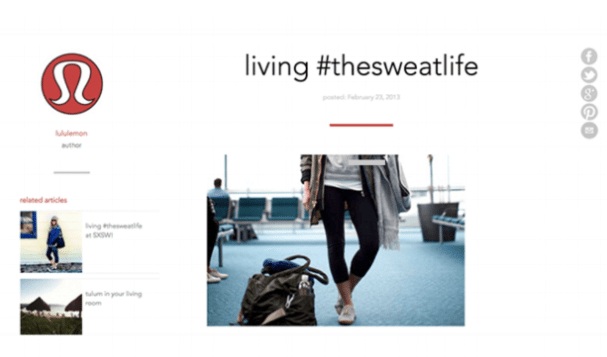
Another advantage of user-generated content (and all methods of using customers as a channel) is that it fosters a sense of transparency and honesty as a brand. For example, Three Mobile’s #MakeItRight campaign helped transform the mobile industry into a transparent, trustworthy one by implementing online reviews and UGC.
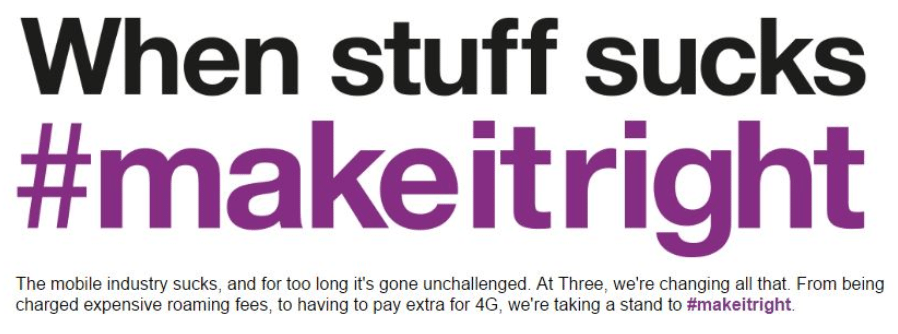
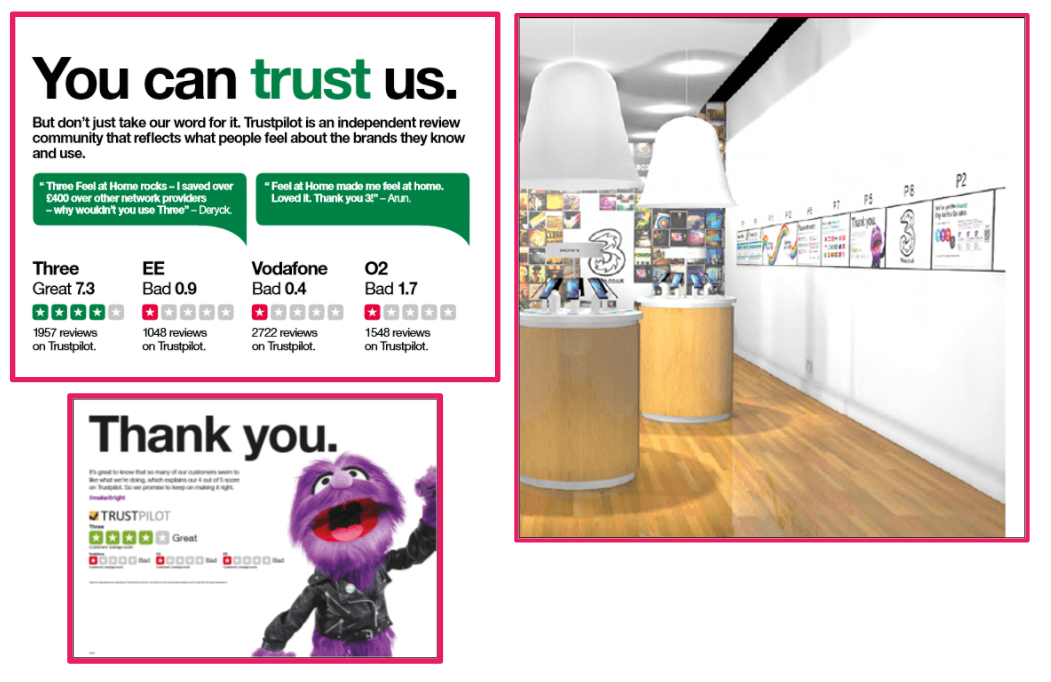
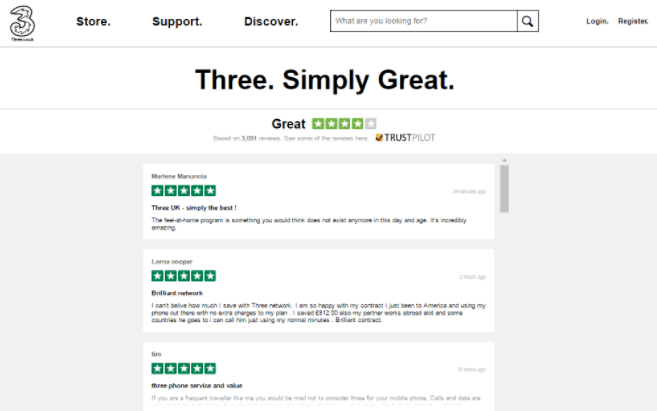
In collecting and promoting UGC, Three and Lululemon experienced improvements in customer acquisition, customer satisfaction, and brand reputation.
Referral Marketing
When thinking about how your own customers can help you acquire more customers, the most direct way is via a referral marketing strategy.
Referral marketing means directly asking your existing customers (and partners) to encourage their own audience, whether peers or consumers, to consider your product or company.
It’s no surprise that this works: a personal recommendation is 4 times more likely to lead to a purchase and 84% of consumers say that recommendations from people they know are the most trustworthy form of advertising.
Referral marketing is also much more cost-effective than many other methods of acquisition and is more successful at getting your ideal customer. Research shows that a referred customer’s Lifetime Value (LTV) is 16% higher than non-referred customers and that word-of-mouth referral was the marketing channel with the biggest impact on revenue.
To learn from the best, check out these leading referral marketing campaigns from American Express and Airbnb:
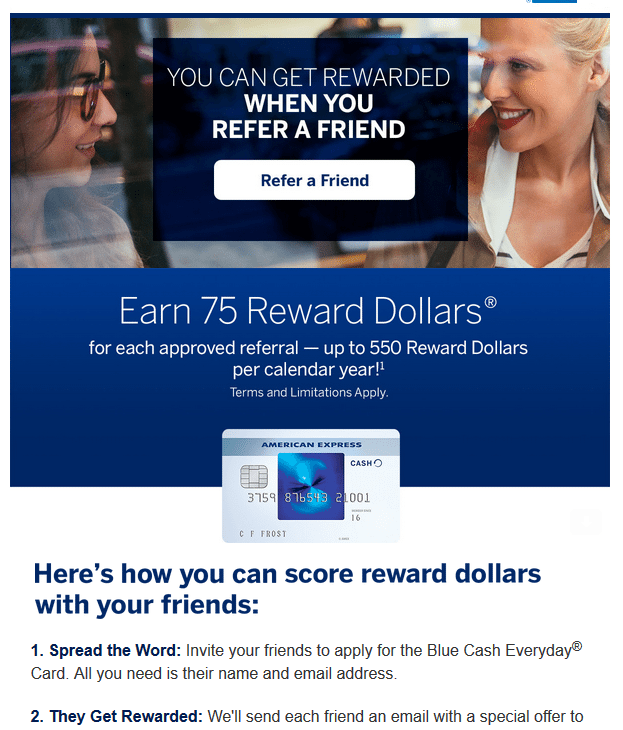
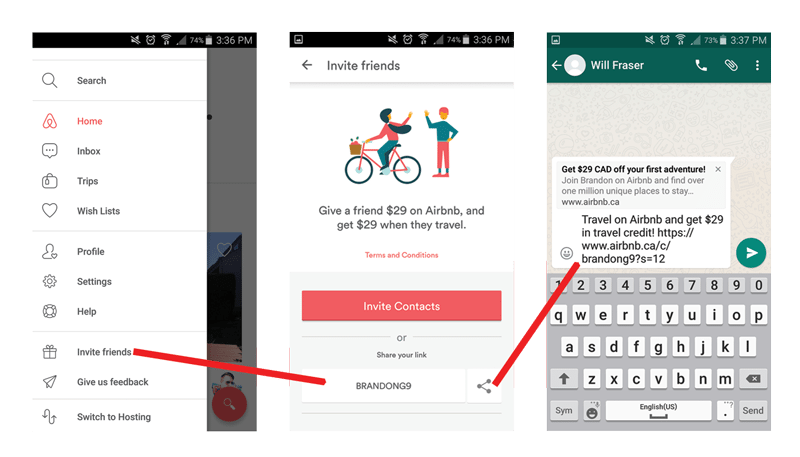
1. Incorporate referrals into your existing strategy
There’s no need to reinvent the wheel when it comes to referral marketing. While you can measure it as a different channel, it can easily piggyback on your social or email marketing to take advantage of an existing audience base.
2. Think about how you frame your message
Airbnb and Amex never make their referral marketing about themselves, it’s all about ‘rewarding’ you (the customer) and ‘your friends’, fostering a sense of community.
3. Show how easy it is
Both campaigns offer a quick process for both the referrer and the referred customer.
4. Make the reward worth it
This might be the most important aspect of referral marketing. Without the right incentive, your audience might not feel encouraged enough to make a referral. Amex and Airbnb have referrers covered, offering respectively $75 and $29 for each referral. Other rewards might include free products or discounts on future purchases – subscription boxes, like snack box Graze have found this type of offer particularly effective.
However, remember that money may not always be the right reward for referrals. You should assess your audience, research, and test out various benefits to find out what rewards and implementations work best. By applying referral marketing on existing channels, you’re making a major impact on your marketing without spending too much time or effort.
Social Media Marketing
We can’t understate the value social media provides to any business. There are 1.8 million active users on Facebook alone, and 2.7 billion total active social media users around the world. If you’re not incorporating social media into your marketing programmes, you’re missing out on a major channel to both activate and leverage your happy customers in order to drive acquisition.
Why? This is where your happy customers are expressing their views about you (see our earlier chapter on UGC) but also where their engagement with your content immediately gives you exposure to their following.
Whether they’re likes, retweets, favorites, or shares, having your happy customers fully engaged with you on social media immediately boosts your visibility in a credible and authentic manner.
However, standing out from the competition is a challenge when it comes to social media. Here are a few tips worth considering.
1. Understand the difference between platforms
LinkedIn is different from Twitter and different from Facebook. We’re not just talking about character lengths: audiences, content types, and even the frequency of posts should all be optimized for each platform.
You should also consider which platforms are the most important for your business. If your audience is young, Instagram and Snapchat might be where your happy customers live and share content. If your consumers are older professionals or businesses, LinkedIn is likely the right choice.
2. Measure often
Social media platforms have a wealth of analytics for you to track, measure, and iterate upon. While there are studies that show optimised timing and cadence of posts, these should be baselines, not hard-and-fast rules. Make sure you identify and track KPIs for each platform.
3. Visual content is the key to success
In 2017, tweets with images received 150% more retweets, 18% more clicks, and 89% more favorites than tweets without images. If you’re going to leverage social media platforms, you should consider how visual content will play into your social media strategy.
While you don’t have to break the bank on custom visual content, crafting an identity or guidelines can go a long way. Will you focus on people, iconography, or a specific colour palette? All these decisions ensure your identity is clear and recognizable, increasing your chances to succeed. In order to optimize your visual content, here’s a social media cheat sheet to make sure your images look good.
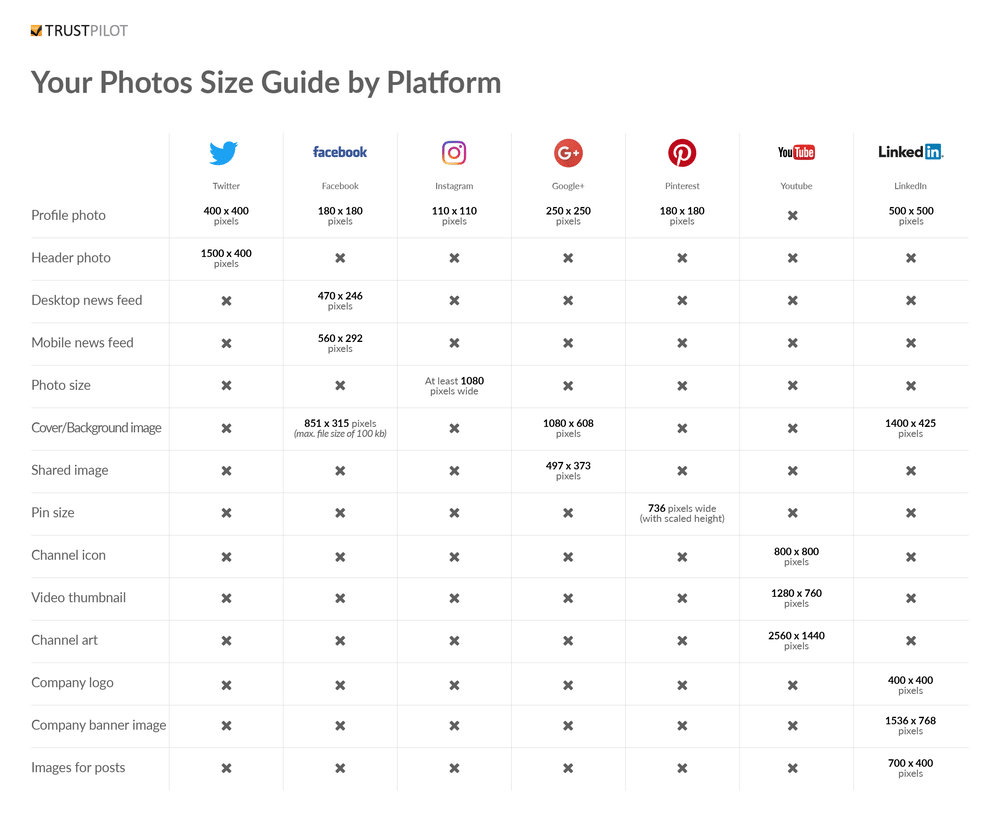
The Data
Finally, a slightly different point. It’s not just what your happy customers say and do that can help you acquire more of them – it’s the data they generate along the way.
Smart, effective marketing requires targeting the right person with the right message at the right time. Let’s dig into how data from your happy customers can help you do that:
‘The right person’
To target the right person, you need to know what they look like: fleshed-out personas and segments that you can use to make your marketing activity more targeted and more accurate – ultimately more successful and with higher return.
The great thing is that you already know what those ideal customers look like because you’ve already seen thousands of them in the form of happy customers. Using data to identify and analyse their attributes and activity will allow you to form detailed personas that you can then target to acquire more of them.
‘The right message’
Your customer data isn’t just going to tell you about what your ideal customer looks like and where to find them – it’ll also help you see what they’re interested in.
For example, you can use their habits and histories to deliver product recommendations to shoppers who fit the same profile. This is a key part of helping give your visitors a seamless and relevant customer journey – and it comes from looking at those who have gone before them.
‘The right time’
Finally, you can review customer journeys to stress-test the experience you’re delivering. If a customer who knows and trusts your brand and products is having trouble with a new process, you’ve identified your urgent fix priorities. You can do this quantitatively but also qualitatively – your key advocates are a great source for user testing and more detailed feedback.
Key Takeaways
We all know how important it is to manage your detractors and unhappy customers, knowing that the consequence of failing to do so could result in them sharing their negative experiences and damaging your reputation.
What we’ve seen in this book is the other side of the coin. In your happy customers, there lies a huge opportunity to not only get great lifetime value, but boost an efficient and effective acquisition strategy.
Remember the key points below to make your acquisition marketing more authentic, more creative and more effective:
- Social proof is no longer a nice-to-have – today’s shoppers demand reviews and trust signals, so put the work into getting your happy customers to express their opinions.
- Word-of-mouth now takes the form of UGC – encouraging your customers to share content and leveraging it is a powerful and effective means of varying your content and reaching new audiences.
- For the right product or service, referral marketing can be a smart and fast way to grow your customer base – just make sure your incentives are right.
- Engaging your advocates on social media is a powerful and authentic way of getting your content shared; take the medium seriously to make sure you contribute value and avoid being another brand shouting about itself on Twitter.
- One of the most valuable things you can do with a happy customer is to get to know them – learn about their profiles and their motivations in order to optimize your acquisition strategies to get more of them!